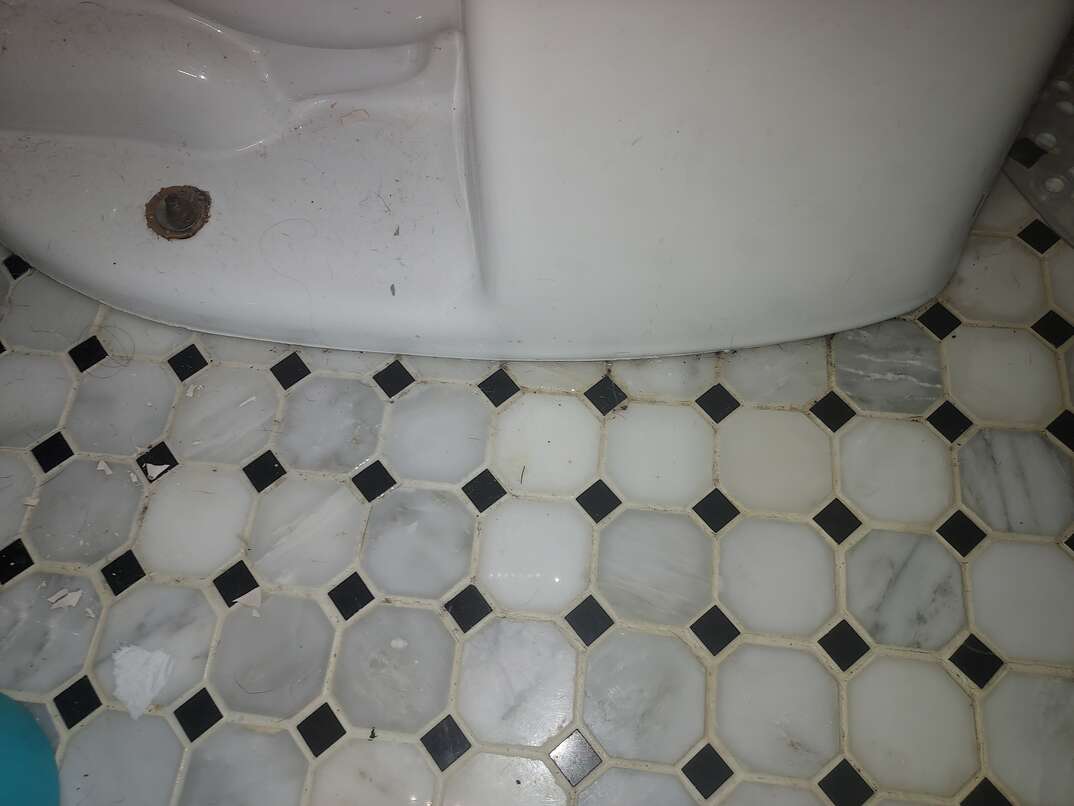Why Is My Toilet Moving?

Nothing has the power to make you feel uneasy quite like a loose toilet that wobbles from side to side when you use the bathroom.
This toilet issue is often easy to fix, but it's important to get to the bottom of your wobbly toilet dilemma to rule out more serious structural concerns.
Why Is My Toilet Loose From the Floor?
If your toilet rocks, it's because the toilet base isn't flat against the floor. A toilet flange connects the underside of your toilet to the drainpipe. Wobbly toilets happen when the toilet flange is higher than the floor because it prevents your fixture from sitting flush.
There are several potential reasons for a toilet flange to sit higher than it should. Often, it occurs when the toilet bolts loosen or the floor below the toilet sinks or settles.
The most common reason a toilet rocks is loose toilet bolts. Toilet bolts fasten your toilet to the floor and can become loose or damaged over time. When the bolts stop working correctly, your toilet will rock or wobble when you sit on it. Other potential causes of a loose toilet include:
- Uneven flooring
- Cracked or loose bathroom floor tiles
- Incorrect installation
- Loose connections between plumbing pipes and the toilet
Occasionally, a loose toilet can signify bigger problems with your plumbing system or foundation. Soil settlement and foundation cracks can cause the floor beneath your toilet to sink, leading to a wobbly fixture. Settlement damage can cause significant structural issues in your home and may affect its value, so addressing the problem as soon as possible is important.
Leaks and water damage can also impact the floor beneath your toilet. This issue most commonly appears when the wax seal connecting the toilet flange to the drain pipe deteriorates, allowing water and sewage to seep into the floor. Over time, the flooring materials can break down, causing unevenness and sinkage. Allowing the leak to continue poses a health hazard and can lead to more serious problems, such as mold growth and structural damage.
More Related Articles:
- Calling a Plumber? Here Are the 6 Most Common Plumbing Jobs and How Much They Cost
- 6 Ways to Try to Unclog Your Sink Before You Call a Plumber
- What's in My Plumber's Van?
- Here's How Much It Costs to Remodel a Bathroom
- 6 Tips for Hiring a Plumber
How Do You Fix a Loose Toilet?
Fortunately, fixing a loose toilet is usually straightforward. The following steps can help you diagnose and repair the problem to stabilize your fixture.
Step 1: Inspect the Toilet for Leaks
You should always check the toilet for leaks before trying any other method to fix a loose toilet. If you don't, you risk the leak worsening and causing widespread water damage. You'll generally see water escaping around the toilet base if you have a leaky toilet. You can usually repair a leaking toilet by removing the fixture and replacing the wax seal around the flange.
Step 2: Tighten the Toilet Bolts
If you don't detect a leak, tighten the toilet bolts at the side of the base with pliers until it stops rocking. Overtightening the bolts can cause cracks in the toilet base, so it's essential to turn them slowly and gently. Stop as soon as the toilet feels stable.
You won't be able to tighten the bolts if they're cracked or damaged. You can purchase replacement toilet bolts online and from DIY stores.
Step 3: Install Toilet Shims
If tightening the toilet bolts doesn't work, install toilet shims to stop it from rocking. Toilet shims fill small gaps around the toilet base, a little like placing folded paper under a table leg to prevent wobbling.
Install toilet shims by inserting the narrower end into gaps between the toilet base and the floor. You can double up the shims to fill larger spaces. Gently tap the end of the shim with a mallet to wedge it under the toilet. Trim any protruding parts with a utility knife.
Toilet shims are affordable and available from many DIY stores. Plastic or rubber shims are a better option than wood because they won't degrade in the moist environment of your bathroom.
When to Call a Professional
You should always call a professional plumber to inspect and repair your loose toilet if the above steps don't work, the toilet starts wobbling again or leaks continue after replacing the wax seal. Your plumber can diagnose and fix more serious problems before they escalate and require expensive repairs. You may need to consult a foundation repair professional if you suspect settlement or foundation issues.
Elocal Editorial Content is for educational and entertainment purposes only. Editorial Content should not be used as a substitute for advice from a licensed professional in your state reviewing your issue. Systems, equipment, issues and circumstances vary. Follow the manufacturer's safety precautions. The opinions, beliefs and viewpoints expressed by the eLocal Editorial Team and other third-party content providers do not necessarily reflect the opinions, beliefs and viewpoints of eLocal or its affiliate companies. Use of the Blog is subject to the
Website Terms and Conditions.The eLocal Editorial Team operates independently of eLocal USA's marketing and sales decisions.



